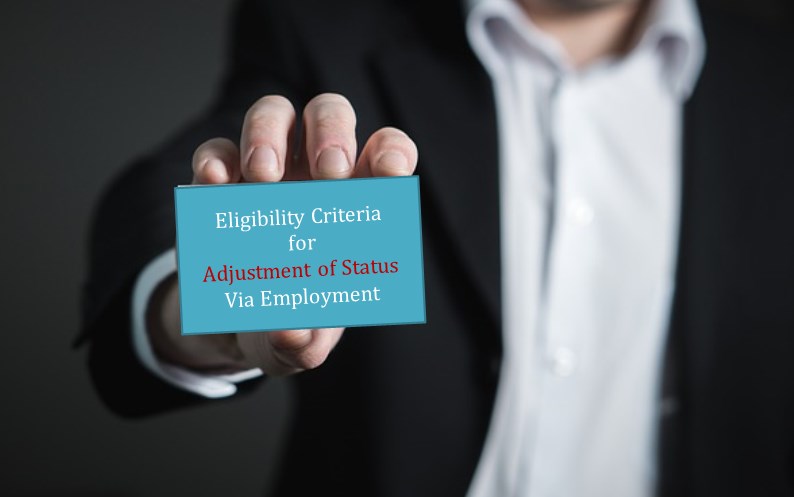
Eligibility Criteria for Adjustment of Status Via Employment
Have you applied for the adjustment of status six months prior to your visa expiry?
If you haven’t, you would get an NTA (Notice to Appear).
The threat of appearing before an immigration judge is a big concern for the immigrants from India, especially. It also initializes an uncertain deportation by the USCIS (United States Citizenship and Immigration Services). Simply put, you may be asked to leave the country all of sudden. Also, some penalties could also be imposed.
What is Adjustment of Status?
You need a lawful permanent resident status if you want to live in the USA. The Adjustment of Status can be called a green card application. You could apply to attain the citizenship of America after completion of a certain stay-period.
What eligibilities should you have to file for claiming the Adjustment of Status?
Determining your eligibility for the green card is a first step to initialize the Adjustment of Status. There are a variety of ways to file for this status adjustment. You should choose the way according to your immigrant profile. In other words, you should know the category you’re classified under.
The categories of this visa are grouped under family visa, employment visa, special immigrant visa, refugee or Asylee status, human trafficking and crime victim visa, victims of abuses visa, and others.
Massive number Indian immigrants go there on the H1 or H4 or L1 or L2 employment visa. It allows them to complete six year limit while serving the United States. Once this limit of visa expires, the immigrant has to check his eligibility for acquiring the green card.
Catch a look of the eligibility criteria for the Adjustment of Status:
- For Immigrant Worker: You should be a first preference immigrant worker. It implies that you should:
- Have an extraordinary ability in the science, arts, education, business or athletics
- Be a professor or researcher of outstanding abilities
- Be a multinational manager or executive under certain criteria
You should be a second preference immigrant worker. Under this category, you:
- Should be a member of profession having advanced degrees
- Should have advanced skills and abilities in the science, art, or business
- Should be seeking a national interest waiver
Besides, you should be a third preference immigrant worker. It means that you should be:
- A skilled worker with more than 2 years of training and work experience
- A professional with a bachelor degree from the US university or any foreign university
- An unskilled worker with less than 2 years of training and work experience
- For Physician National Interest waiver: This category identifies & permits the visa to the physicians who are a full-stack expert in clinical practices. You should be appointed in an underserved area for a specific period of time. You should possess all abilities that are particularly asked for the same.
- For Immigrant Investor: This category is reserved for the big fat investors. If you have invested or are actively involved in the process of investing a huge capital worth $1 million at least in a new commercial unit in the US, you would be eligible for it. You should remember that your investment should create 10 openings of the full-time employees.
Millions of immigrant employees defer the application for this adjustment of status. But now, the USCIS has introduced some stringent rules in this context. In order to promote lawful residency, it has decided to launch a legal trial before a special judge. And, the worst thing is that you can’t leave the country unless the judge passes the verdict or permits for leaving. The situation would be critical because you won’t have the work, neither would have the right to leave. Besides, it would burn a big hole in your pocket.




 this is link
this is link